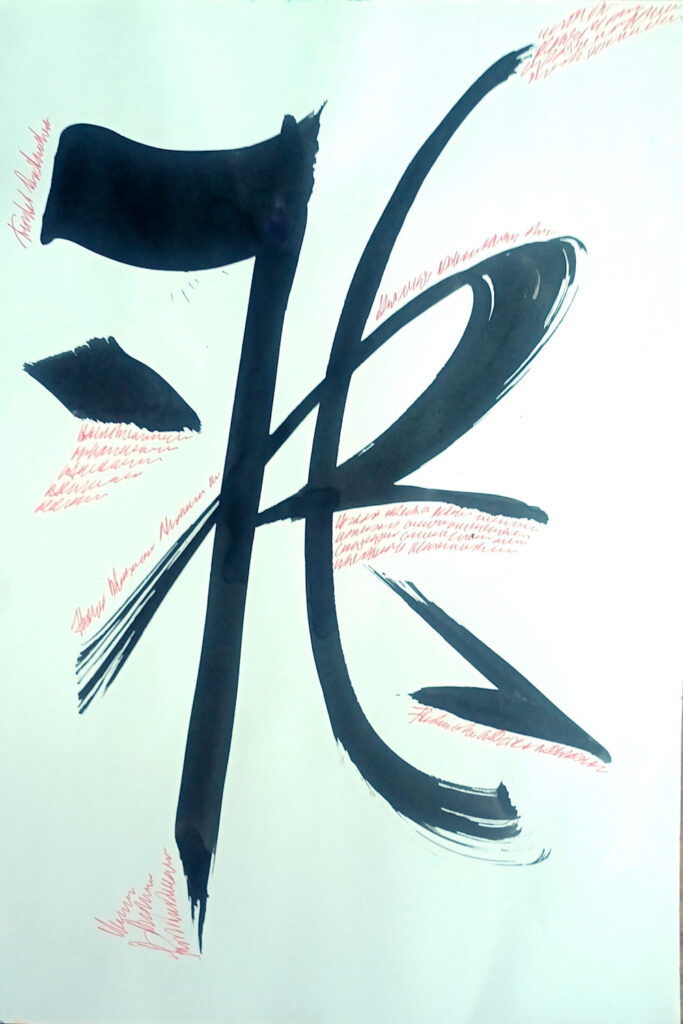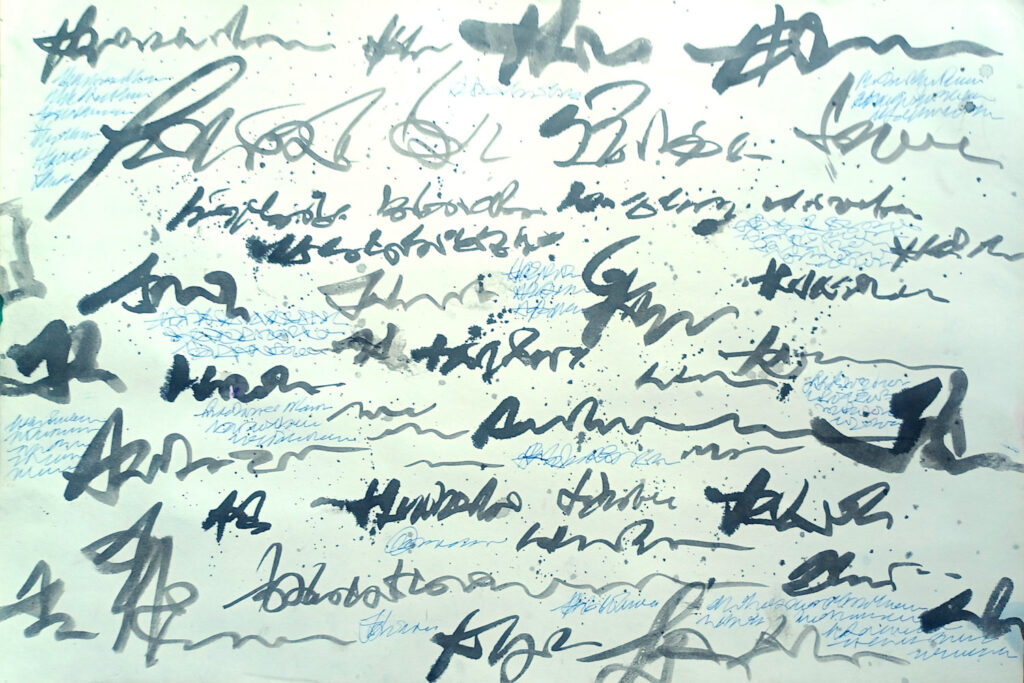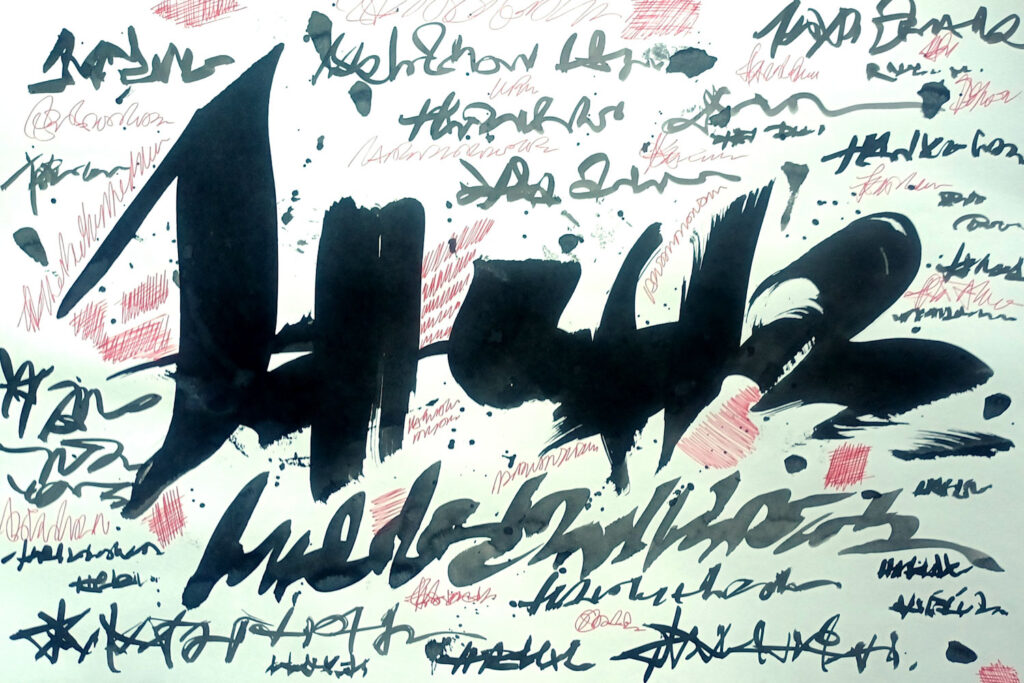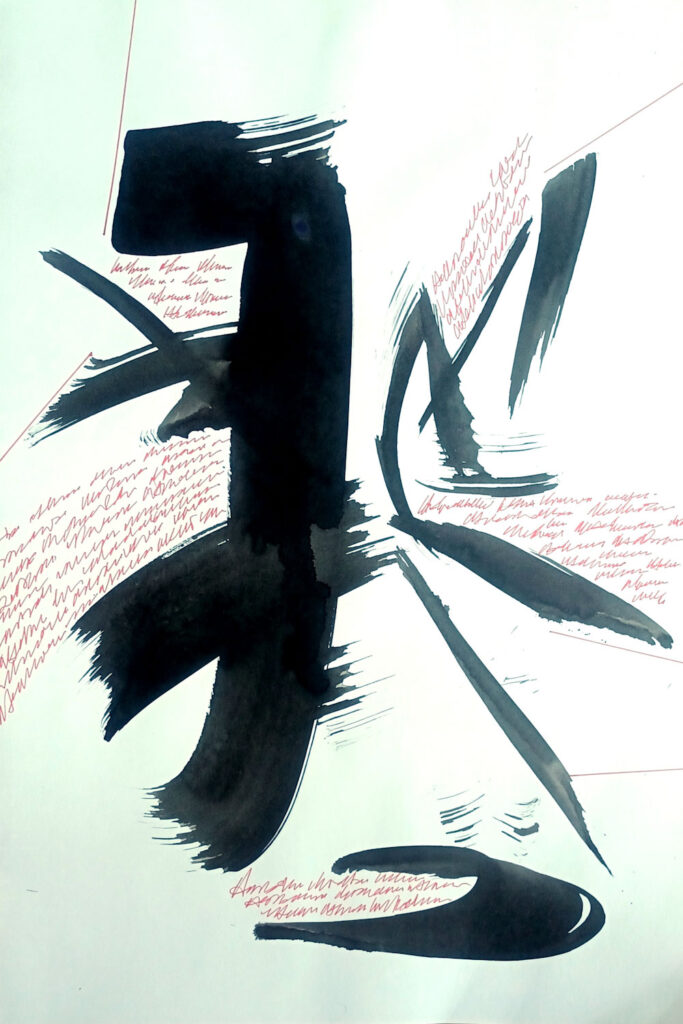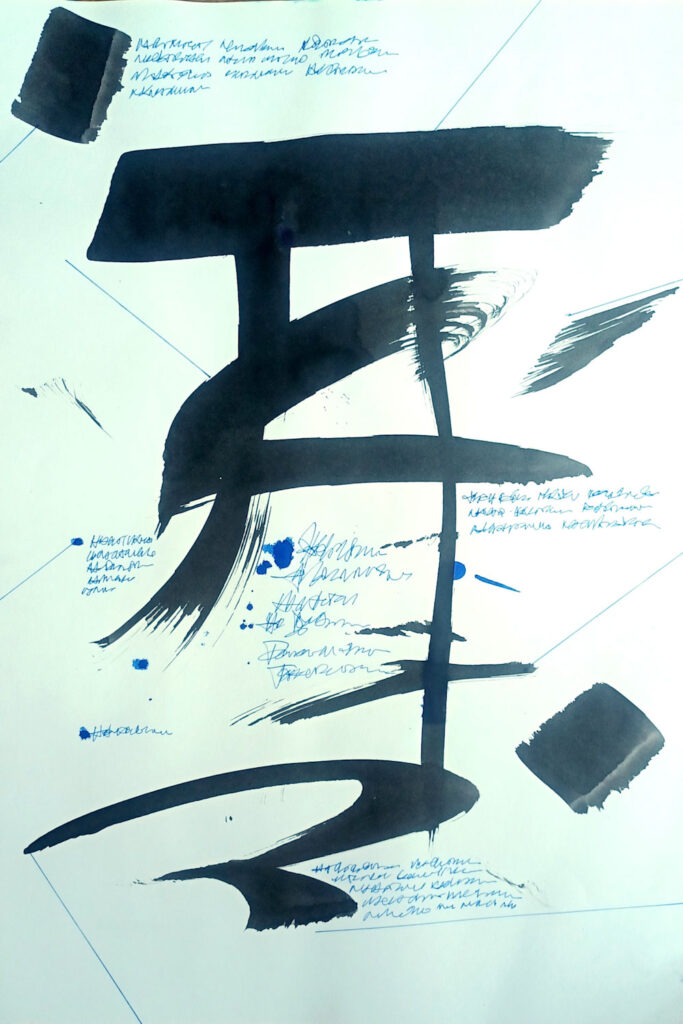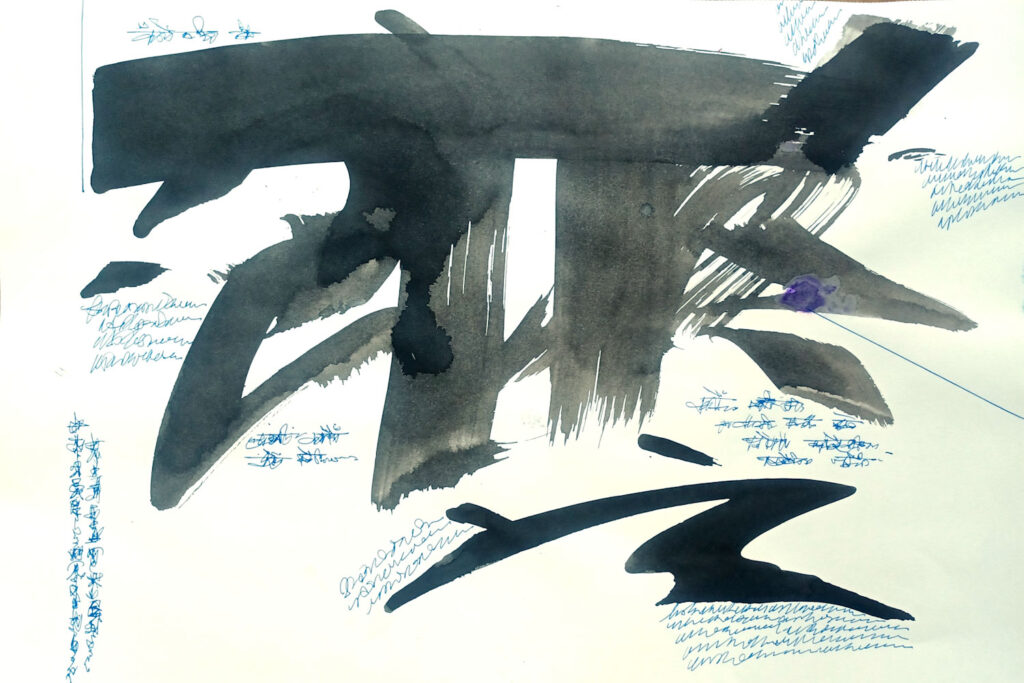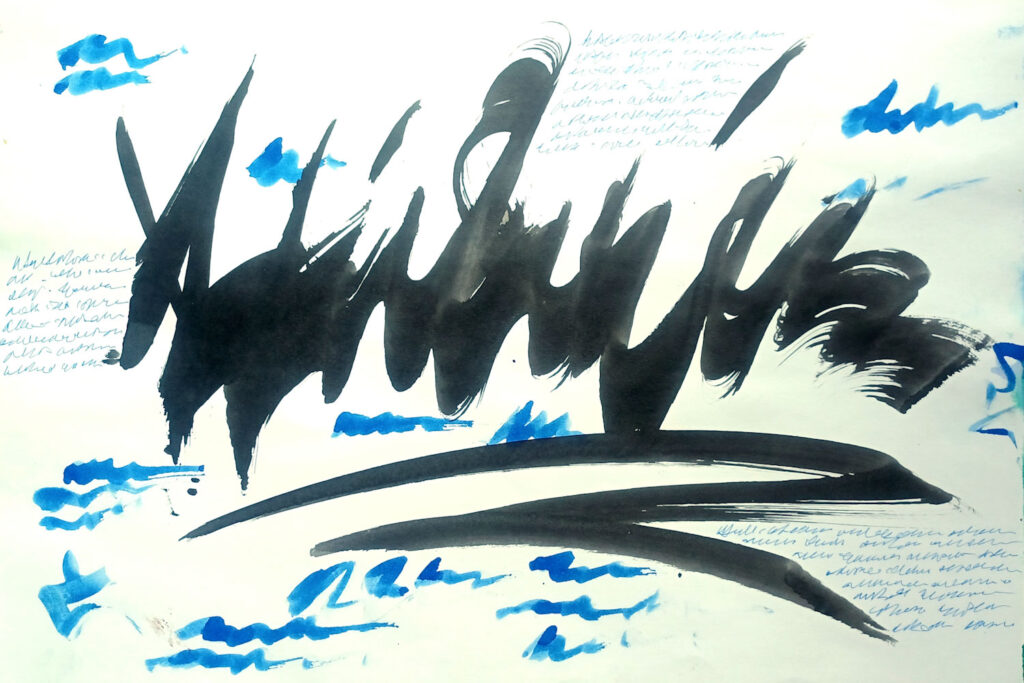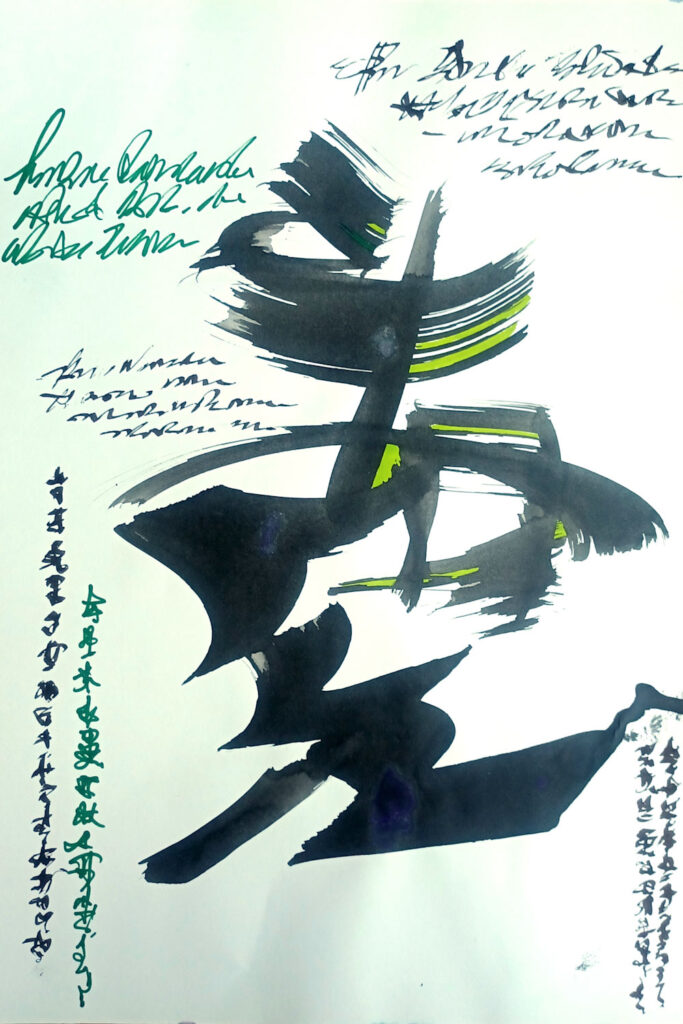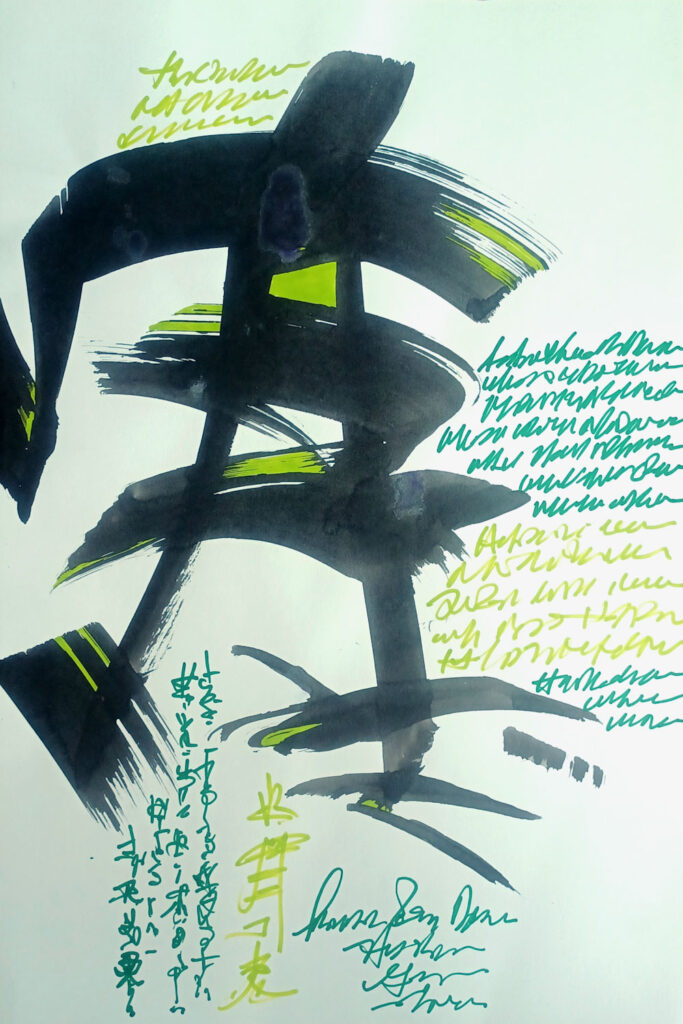Experiments with asemic writing.
The word asemic /eɪˈsiːmɪk/ means “having no specific semantic content”, or “without the smallest unit of meaning”. With the non-specificity of asemic writing there comes a vacuum of meaning, which is left for the reader to fill in and interpret. Asemic writing occurs in avant-garde literature and art with strong roots in the earliest forms of writing. The history of today’s asemic movement stems from two Chinese calligraphers: “crazy” Zhang Xu, a Tang dynasty (c. 800 CE) calligrapher who was famous for creating wild illegible calligraphy, and the younger “drunk” monk Huaisu who also excelled at illegible cursive calligraphy. Japanese calligraphers subsequently expanded upon Chinese abstract calligraphic expression by Hitsuzendō (the way of Zen through brush), allowing their works to move past formal presentation and “breathe with the vitality of eternal experience”. In the early 20th century surrealists and abstractionists were also drawn to asemic writing and much evidence of it exists in their works. Even today asemic writing thrives as a form of post-literature.
